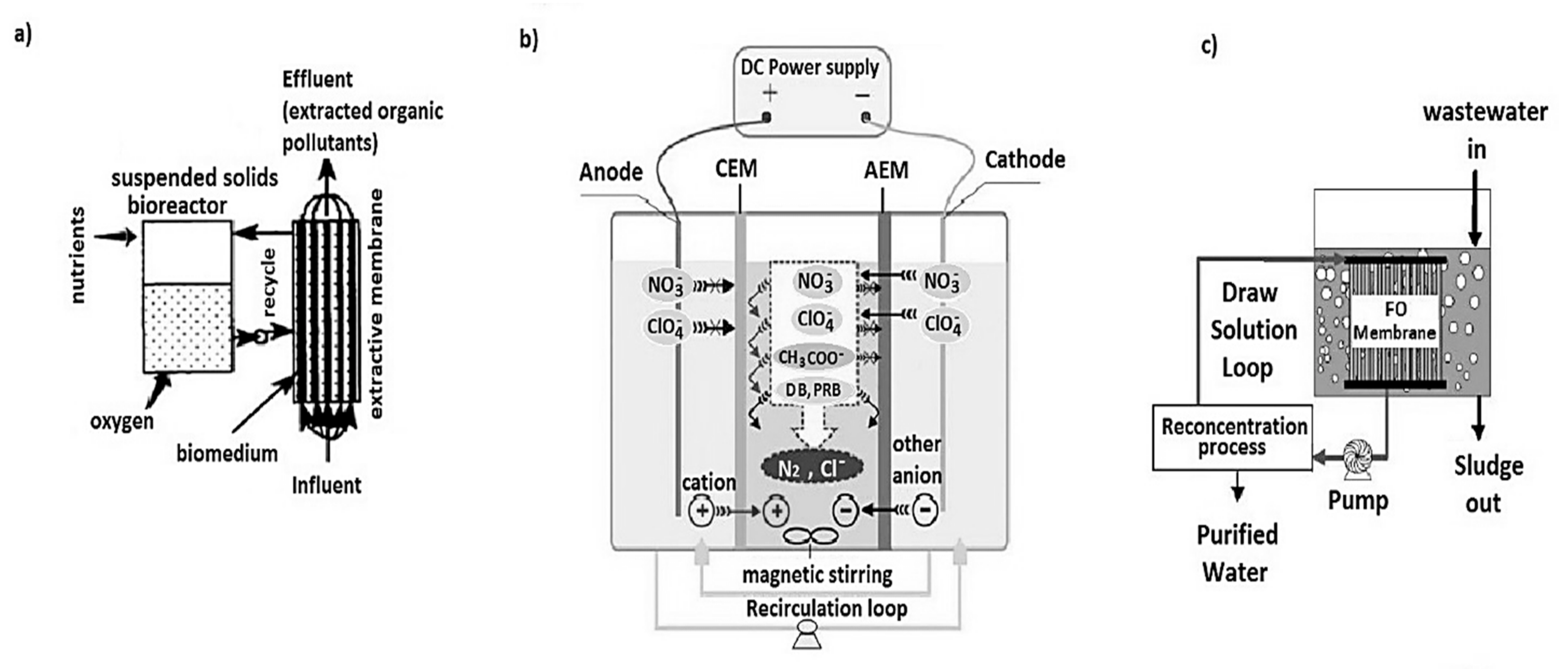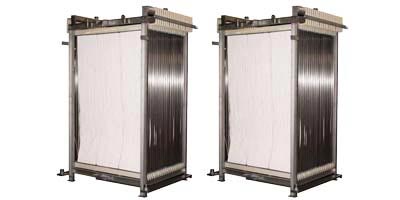Membrane Layer Bioreactors Explained: Reliable Solutions for Tidy Water
Membrane layer bioreactors (MBRs) have actually become an advanced remedy for dealing with the pressing challenges of wastewater therapy. By incorporating biological processes with advanced membrane purification, MBRs not only enhance the top quality of treated water but additionally decrease the spatial demands of therapy facilities. As environmental worries magnify, the duty of MBR innovation in advertising sustainable water management ends up being progressively substantial. The intricacies of their operation, advantages, and possible applications warrant a closer examination to fully recognize their effect on the future of water therapy.

What Are Membrane Layer Bioreactors?
Membrane bioreactors (MBRs) are sophisticated wastewater therapy systems that incorporate organic destruction processes with membrane filtering modern technology. This combination permits the effective removal of impurities from water, making MBRs a preferred selection in numerous applications, consisting of metropolitan wastewater treatment and commercial effluent monitoring.

One of the vital benefits of MBRs is their ability to produce high-grade effluent, commonly suitable for reuse in irrigation or industrial procedures. Furthermore, MBRs need a smaller sized footprint compared to traditional therapy systems, making them perfect for urban settings where space might be restricted.
Moreover, MBRs can efficiently take care of varying influent lots and are much less prone to the effects of hazardous shocks. These qualities contribute to their growing appeal as a sustainable solution for attending to the raising need for tidy water while decreasing environmental impacts.
How Membrane Bioreactors Work
While the procedure of membrane bioreactors (MBRs) might seem facility, it basically rotates around the harmony in between biological processes and membrane layer purification. MBRs integrate an organic therapy process, usually triggered sludge, with a membrane layer splitting up unit to treat wastewater efficiently.
In an MBR system, wastewater is first presented into a bioreactor where microbes weaken organic matter and other pollutants. The biological activity minimizes the focus of contaminants while advertising the growth of biomass. Following this biological therapy, the blended alcohol is subjected to membrane purification, which can be microfiltration or ultrafiltration, relying on the desired effluent quality.
The membranes function as a physical obstacle, permitting water and tiny solutes to pass while maintaining put on hold solids and bigger molecules. This makes it possible for the system to preserve a high focus of biomass within the reactor, improving the treatment efficiency.
Additionally, the continual separation of treated water from the biomass assists in a portable layout and decreases the footprint of the therapy facility. Overall, the mix of organic deterioration and membrane layer filtration in MBRs causes reliable and reliable wastewater treatment, making certain top notch effluent ideal for various applications.
Advantages of MBR Technology
Among the crucial advantages of membrane layer bioreactor (MBR) modern technology is its capability to generate top notch effluent with a dramatically minimized footprint compared to traditional wastewater treatment techniques. MBR navigate here systems properly integrate organic treatment and membrane layer filtering, leading to premium elimination of impurities, including suspended solids, microorganisms, and raw material. This ability causes effluent that often meets or exceeds rigid governing requirements for reuse and discharge.
In addition, MBR technology enables greater biomass focus, which boosts the therapy effectiveness and decreases the needed reactor volume. This small layout is particularly valuable in city areas where area is limited. The operational adaptability of MBR systems also means they can adjust to differing influent qualities and circulation rates, making them ideal for a variety of applications.
Furthermore, the reduced sludge manufacturing related to MBR procedures adds to reduce functional and maintenance expenses. The membrane layers work as a physical obstacle, lessening the risk of blocking and enabling longer operational durations in between cleaning. On the whole, the advantages of MBR innovation make it an attractive solution for lasting wastewater therapy, attending to both ecological concerns and the demand for efficient resource monitoring.
Applications of Membrane Bioreactors
With their flexibility and effectiveness, membrane bioreactors (MBRs) find applications across different fields, including municipal wastewater treatment, commercial processes, and even water improvement. In local setups, MBRs give a small solution for treating wastewater, effectively removing contaminants while all at once producing high-grade effluent that satisfies rigid regulative standards. This makes them particularly ideal for locations with restricted space.
In commercial applications, MBR innovation is made use of for treating procedure water, especially in markets such as food and drink, pharmaceuticals, and petrochemicals. These markets gain from MBRs' capability to manage high natural loads and their efficiency in recuperating valuable resources from wastewater, such as click this link nutrients and water.
Additionally, MBRs play an important role in water recovery initiatives, allowing the reuse of treated wastewater for watering, commercial procedures, and even as safe and clean water after further therapy (Membrane Bioreactor). Their performance in removing pathogens and pollutants makes them a trustworthy selection for ensuring water quality in different reuse applications
Future of Water Therapy Solutions
The future of water treatment solutions is positioned for transformative innovations driven by technical development and raising ecological awareness. As global water scarcity ends up being a pressing problem, brand-new techniques, including membrane layer bioreactor (MBR) systems, are set to play a critical duty in improving the effectiveness and sustainability of water therapy processes.
Arising technologies such as expert system and machine knowing are anticipated to enhance treatment procedures, permitting for real-time surveillance and anticipating upkeep. This will boost the general dependability and efficiency of water therapy facilities. Developments in membrane layer products, such as graphene and nanofiltration, guarantee to enhance permeation prices and minimize fouling, leading to reduced power usage and functional prices.
Furthermore, the combination of eco-friendly power resources right into water treatment plants will add to greener techniques. The circular economic climate version will certainly also gain traction, motivating the recovery of useful sources from wastewater, such as nutrients and power.
Final Thought

Membrane layer bioreactors (MBRs) have actually emerged as an innovative solution for addressing the pressing challenges of wastewater therapy. By integrating biological processes with innovative membrane layer filtration, MBRs not only improve the quality of cured water yet additionally decrease the spatial demands of treatment facilities.One of the key advantages of membrane layer bioreactor (MBR) innovation is its capability to create high-grade effluent with a dramatically lowered impact compared to traditional wastewater treatment techniques.With their versatility and performance, membrane bioreactors (MBRs) find applications across various industries, including community wastewater treatment, industrial procedures, and also water reclamation.In conclusion, membrane layer bioreactors represent a substantial improvement in wastewater therapy technology, integrating organic processes with effective membrane filtering to create high-quality effluent.